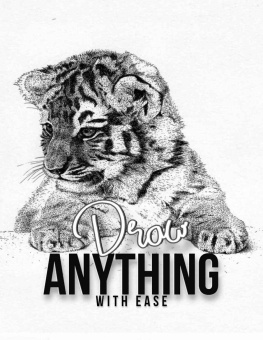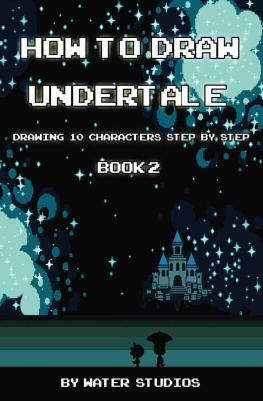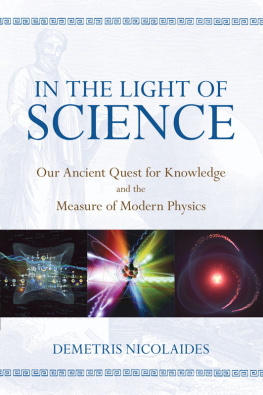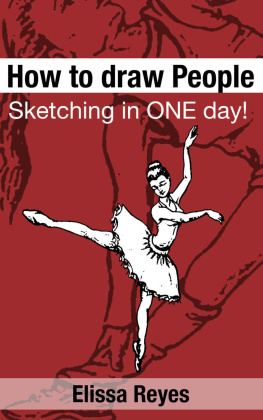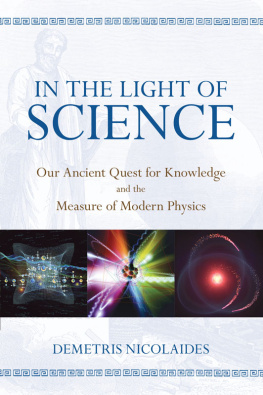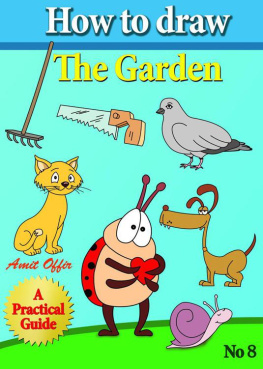Kimon Nicolaïdes - The Natural Way to Draw
Here you can read online Kimon Nicolaïdes - The Natural Way to Draw full text of the book (entire story) in english for free. Download pdf and epub, get meaning, cover and reviews about this ebook. year: 2013, publisher: Read Books, genre: Religion. Description of the work, (preface) as well as reviews are available. Best literature library LitArk.com created for fans of good reading and offers a wide selection of genres:
Romance novel
Science fiction
Adventure
Detective
Science
History
Home and family
Prose
Art
Politics
Computer
Non-fiction
Religion
Business
Children
Humor
Choose a favorite category and find really read worthwhile books. Enjoy immersion in the world of imagination, feel the emotions of the characters or learn something new for yourself, make an fascinating discovery.

- Book:The Natural Way to Draw
- Author:
- Publisher:Read Books
- Genre:
- Year:2013
- Rating:3 / 5
- Favourites:Add to favourites
- Your mark:
- 60
- 1
- 2
- 3
- 4
- 5
The Natural Way to Draw: summary, description and annotation
We offer to read an annotation, description, summary or preface (depends on what the author of the book "The Natural Way to Draw" wrote himself). If you haven't found the necessary information about the book — write in the comments, we will try to find it.
The Natural Way to Draw — read online for free the complete book (whole text) full work
Below is the text of the book, divided by pages. System saving the place of the last page read, allows you to conveniently read the book "The Natural Way to Draw" online for free, without having to search again every time where you left off. Put a bookmark, and you can go to the page where you finished reading at any time.
Font size:
Interval:
Bookmark:
A WORKING PLAN FOR ART STUDY
BY
Kimon Nicolades
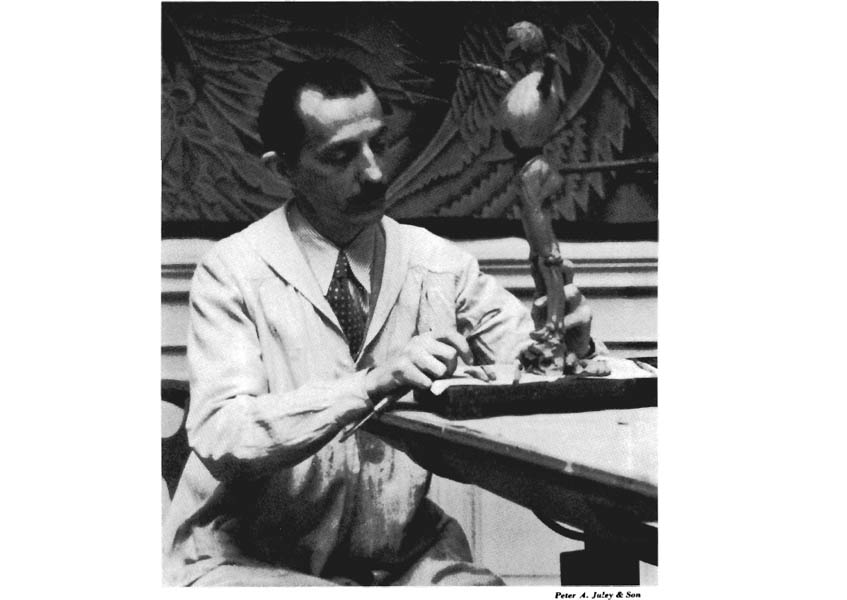
Kimon Nicolades
THE impulse to draw is as natural as the impulse to talk. As a rule, we learn to talk through a simple process of practice, making plenty of mistakes when we are two and three and four years old but without this first effort at understanding and talking it would be foolish to attempt to study grammar or composition. It is this vital preparation, this first mouthing of the words which mean actual things, that parallels the effort a student should make during the first years of his art study.
There is only one right way to learn to draw and that is a perfectly natural way. It has nothing to do with artifice or technique. It has nothing to do with aesthetics or conception. It has only to do with the act of correct observation, and by that I mean a physical contact with all sorts of objects through all the senses. If a student misses this step and does not practice it for at least his first five years, he has wasted most of his time and must necessarily go back and begin all over again.
The job of the teacher, as I see it, is to teach students, not how to draw, but how to learn to draw. They must acquire some real method of finding out facts for themselves lest they be limited for the rest of their lives to facts the instructor relates. They must discover something of the true nature of artistic creation of the hidden processes by which inspiration works.
The knowledge what is to be known about art is common property. It is in many books. What the teacher can do is to point out the road that leads to accomplishment and try to persuade his students to take that road. This cannot be a matter of mere formula.
My whole method consists of enabling students to have an experience. I try to plan for them things to do, things to think about, contacts to make. When they have had that experience well and deeply, it is possible to point out what it is and why it has brought these results.
The real laws of art, the basic laws, are few. These basic laws are the laws of nature. They existed even before the first drawing was made.
Through constant effort, patient groping, bit by bit, certain rules have been established relating to the technique of picture making. These rules are the result of mans ability to relate the laws of balance, which he has found in nature, to the business of making a picture. But in the beginning it is not necessary to worry about them. In the beginning these rules and their application will remain a mystery no matter what one does about it.
Man can make only the rules. He cannot make the laws, which are the laws of nature. It is an understanding of these laws that enables a student to draw. His difficulty will never be a lack of ability to draw, but lack of understanding.
Art should be concerned more with life than with art. When we use numbers we are using symbols, and it is only when we transfer them to life that they become actualities. The same is true with rules of drawing and painting. They are to be learned, not as rules, but as actualities. Then the rules become appropriate.
To understand theories is not enough. Much practice is necessary, and the exercises in this book have been designed to give that practice.
KIMON NICOLADES
A WORKING PLAN FOR ART STUDY
THIS book was written to be used. It is not meant simply to be read any more than you would sit down to read through an arithmetic book without any attempt to work out the problems it describes.
I assume that you are about to embark on a year of art study, and I plan to teach you as nearly as possible just what you would have learned if you had spent a year in one of my classes at the Art Students League. I do not care who you are, what you can do, or where you have studied if you have studied at all. I am concerned only with showing you some things which I believe will help you to draw. My interest in this subject is a practical one, for my efforts consist in trying to develop artists.
The students who have come to my actual classes have been people of vastly differing experience, taste, background, and accomplishments. Some had studied a great deal, some not at all. Many were teachers themselves. I always ask them, as I am going to ask you, to approach these exercises from the beginning, exactly as if you were a beginner, whatever your preparation may have been. I believe that the reason for this will become apparent as you work. Each exercise develops from preceding ones, and it is conceivable that if you opened this book anywhere other than at the beginning you would be misdirected rather than helped.
The arrangement of the text has been determined, not by subject matter, but by schedules for work, because the work is the important thing. Each section of reading matter is accompanied by a schedule representing fifteen hours of actual drawing. Begin your first days work by reading the first section until you come to the direction that you are to draw for three hours according to Schedule 1A. THEN STOP AND DRAW.
I ask that you follow the schedules explicitly because each one has been planned with care and for a definite purpose. You should not even read the succeeding paragraphs until you have spent the time drawing as directed. And that is true of the entire book, for the basic idea of its instruction is to have you arrive at the necessary relationship between thought and action. Each exercise has its place and earries a certain momentum. If you fail to do it at the time and for as long a time as you are instructed to, you disrupt that momentum. If you feel that you fail with some exercise, that you do not understand it at all, simply practice it as best you can for the required time and then try the next. There are other exercises that will take up the slack provided the effort has been made.
In most courses of study of any sort the general idea prevails that it is to your credit to get through the work quickly. That is definitely not true in this study. If you are particularly apt, your advantage will lie, not in how much sooner you can get the idea and finish, but in how much more you will be able to do at the end of a years work than someone less gifted. What you are trying to learn is not the exercise that should be easy, for I have tried to make each one as simple as possible. You are trying to learn to draw. The exercise is merely a constructive way for you to look at people and objects so that you may acquire the most knowledge from your efforts.
As you begin, try to develop the capacity of thinking of only one thing at one time. In these exercises I have attempted to isolate one by one what I consider the essential phases of, or the essential acts in, learning to draw. I turn the spotlight first on one, then another, so that by concentrating on a single idea you may be able most thoroughly to master it. The exercises eventually become welded and the habits thus formed will contribute to every drawing you make.
Dont worry if for the first three months your studies do not look like anything else called a drawing that you have ever seen. You should not care what your work looks like as long as you spend your time trying. The effort you make is not for one particular drawing, but for the experience you are having and that will be true even when you are eighty years old.
I believe that entirely too much emphasis is placed upon the paintings and drawings that are made in art schools. If you go to a singing teacher, he will first give you breathing exercises, not a song. No one will expect you to sing those exercises before an audience. Neither should you be expected to show off pictures as a result of your first exercises in drawing.
Font size:
Interval:
Bookmark:
Similar books «The Natural Way to Draw»
Look at similar books to The Natural Way to Draw. We have selected literature similar in name and meaning in the hope of providing readers with more options to find new, interesting, not yet read works.
Discussion, reviews of the book The Natural Way to Draw and just readers' own opinions. Leave your comments, write what you think about the work, its meaning or the main characters. Specify what exactly you liked and what you didn't like, and why you think so.


